Table of contents
What is Bulgur? Bulgur ( dry) is a gently pre-cooked ( not raw), dried, peeled and finally crushed durum wheat ( Triticum durum) that is used in a similar way to rice or couscous. Bulgur wheat originally comes from Turkey and the Middle East, where it is still considered a staple food. In Europe, bulgur is also available regionally and organically.
Using bulgur in the kitchen:
Bulgur, also known as durum wheat meal or durum wheat groats, has a rather neutral, slightly nutty taste. What is bulgur good for? Bulgur is suitable for both savoury and sweet dishes. This cereal side dish is now enjoying increasing popularity in European kitchens. Bulgur is sold in various degrees of fineness.
Fine bulgur wheat is primarily used for sweet casseroles, desserts and porridge as well as for baking bread and in salads.
What is bulgur salad? The Arabic bulgur salad Tabouleh (Taboulé, Tabbouleh), which is served as a starter (mezze), is particularly well-known. It consists of bulgur, tomatoes, spring onions, olive oil, lemon juice and peppermint. In Turkey, bulgur salad is known as Kisir (kısır). In addition to the ingredients mentioned (for Taboulé), this vegan grain salad traditionally contains parsley, spearmint, tomato paste, paprika paste and spices such as paprika powder,pepper and salt. Individual ingredients in these bulgur recipes can vary; couscous can also be used as a bulgur substitute.
Coarse bulgur is used in soups and stews. Bulgur wheat is a good alternative to rice (e.g. in pilaf) or pasta and can be used as a side dish or served with vegetables as a stir-fry. Durum wheat groats are also used as a minced meat substitute (in vegetarian and vegan Bolognese or for vegan kofte) and serve as a base for bulgur patties and falafel (vegan).
Vegan recipe for orange bulgur dessert:
Ingredients (for 2 people): 100 g bulgur (dry, organic), 1 small apple, 1 large untreated orange (organic), 1 small pear, 100 g grapes, 1 small banana, 1 fresh fig, ½ lime, possibly 1 teaspoon maple syrup.
Preparation: First, soak the bulgur in 100 ml of boiling water for about 5 minutes. Meanwhile, wash the organic orange and grate the peel. Then halve the orange and squeeze out the juice. Mix the juice and orange peel into the bulgur. Wash the remaining fruit and cut into bite-sized pieces. Squeeze half a lime and mix its juice with the maple syrup in a small bowl. Pour the mixture over the fruit and leave to soak in for 10 minutes. Arrange the fruit on a plate together with the orange bulgur. Try the recipe without maple syrup; depending on the ripeness of the fruit, it will be sweet enough without additional sweetener.
Vegan recipe for carrot bulgur patties:
Ingredients (for 2 people): 100 g carrots, 50 g coarse bulgur (dry, organic), 50 g cornstarch, 10 g linseed, 2 tbsp rapeseed oil, 1 tbsp cumin, 1 tsp turmeric, 1 pinch blackpepper, 1 pinch sea salt.
Preparation: Bring the water to the boil in a pot and simmer the bulgur for 20 minutes. In the meantime, use a food processor to finely grind the flaxseed and wash, peel and finely grate the carrots. When the bulgur is cooked, rinse it in cold water and drain well. Put the bulgur and the remaining ingredients in a bowl and mix everything together. The mixture makes four patties, which you first form into balls and then flatten. Add a little oil to a pan. The carrot-bulgur patties should be fried in the pan for about 3 minutes on both sides until they are crispy. Soak up the excess oil with kitchen paper and then serve the patties warm as a side dish or in a vegan burger.
Vegan recipes with bulgur can be found under the note: " Recipes that have the most of this ingredient ".
| Not only vegans or vegetarians should read this: Vegans often eat unhealthily. Avoidable nutritional errors. |
Shopping - where to buy bulgur?
Most supermarkets and wholesalers such as Coop, Migros, Denner, Volg, Spar, Aldi, Lidl, Rewe, Edeka, Hofer etc. have bulgur (or durum wheat groats) in their range. Some of the supermarket chains mentioned also sell organically certified and fairly traded products. Bulgur, dry and organic (organic bulgur), can definitely be found in health food stores, organic shops, organic supermarkets ( Denn's Biomarkt, Alnatura), drugstores, specialty stores or online shops.
Conventionally produced bulgur wheat is often bleached with caustic soda to give it a light, almost white color. Organically grown bulgur, on the other hand, retains its natural color. Bulgur wheat is often sold online as a whole grain variant (or whole grain bulgur). However, this requires a clear declaration; bulgur is usually partially hulled and no longer contains the whole grain.
In addition to bulgur made from durum wheat, variants made from buckwheat, barley and spelt are also available in organic stores.
Making your own bulgur:
To make the bulgur, first rinse the bulgur until the water runs clear. Then bring twice the amount of water or vegetable stock to the boil in a pan. Add the bulgur wheat and let it swell for about 20 minutes until it is cooked. As it swells, the size of the bulgur should more than double, almost triple. We recommend using 3 tablespoons of dried bulgur for one portion. Alternatively, you could soak the bulgur overnight for 8-12 hours in cold water without cooking and let it swell and enjoy it uncooked the next day. Since bulgur is always pre-cooked (pre-cooked durum wheat), it is not raw, so it is not a raw food.
Another way to prepare bulgur is to fry the pre-cooked bulgur wheat briefly in a pan and then pour water over it and let it swell. A very tasty but not so healthy option is to roast it in heat-resistant oil (e.g. refined rapeseed oil) before cooking. Spices such as cumin, cardamom or cinnamon give roasted bulgur a special flavor.
Bulgur can also be prepared in the microwave using twice the amount of water. After 2 minutes in the microwave, let the bulgur wheat swell for another 10 minutes - and it's ready.
Storage:
Always store bulgur wheat in a cool, dark place. Thanks to its low water content, dry bulgur can be kept for around 9 months. After opening the packaging, the ground grains should be transferred to a sealable storage container, such as a preserving jar, to keep it fresh for as long as possible.
Cooked bulgur only lasts 1-2 days in the refrigerator and should therefore be consumed as quickly as possible.
Bulgur ingredients - nutritional values - calories:
Is bulgur low in calories? 100 g of bulgur contains 342 kcal (primarily carbohydrates). Bulgur is therefore not low in calories. Cooked bulgur has around 83 kcal. Regarding bulgur nutritional values, the protein content of 12% is worth mentioning, as this is higher than in basmati rice (9%) and barley groats (9.9%). Compared to oats (16.8%) and spelt (14.9%), bulgur proteins are slightly lower. Bulgur contains very little fat at 1.3%. Depending on the production process, bulgur has up to 18 g of fiber per 100 g. The bulgur fiber stated here is on average 12 g. At 11 g/100g, whole wheat flour contains a similar amount of fiber. 2
Consuming 100 g of bulgur wheat covers 152% of the daily manganese requirement. The content of 3 mg/100g is comparable to that of wholegrain rice and amaranth. Teff ( 9.2 mg/100g) and wheat germ (13 mg/100g) contain significantly more. 2 The human body needs manganese for the development of cartilage tissue, the urinary cycle and carbohydrate metabolism, among other things. 3
Bulgur contains 0.19 g/100g of tryptophan, which covers 77% of the daily requirement. Oatmeal and poppy seeds contain a similar amount. Soybeans (0.6 g/100g) and chia seeds (0.4 g/100g) contain a lot of this amino acid. 2 Tryptophan is one of the eight essential amino acids and acts as a precursor for the vitamin niacin and the neurotransmitter serotonin. 4
100 g of bulgur contains 164 mg of magnesium, which covers 44% of the daily requirement. Sorghum and hazelnuts have comparable amounts. 2 Unpeeled hemp seeds have a considerable magnesium content of 700 mg/100g. This essential element is involved in over 300 enzymatic metabolic reactions in the human body and is important for the mineralization and growth of bones. 5
The daily requirement of phosphorus is covered by 43% by consuming 100 g of bulgur wheat. The content of 300 mg/100g is comparable to that of wholemeal spelt flour and millet. 2 Phosphorus is a major element that the body needs for energy production. In addition, phosphorus is an important component of teeth, bones and cell membranes. 6,7 We actually get enough phosphorus from a natural diet.
You can find all the ingredients of Bulgur, how much it covers your daily needs and comparison values with other ingredients in our nutrient tables below the ingredient image.
Health aspects - effects:
How healthy is bulgur? Gently produced bulgur contains slightly more vitamins and minerals than couscous because it is made from the whole grain. Bulgur is high in calories due to its high carbohydrate and protein content, but also contains a lot of filling fiber. Due to its smaller grain size, bulgur wheat is considered to be very easy to digest. The fiber it contains promotes digestion and keeps the intestinal flora healthy by helping to excrete toxins, heavy metal salts and excess fluid. The phenolic compounds contained in bulgur act as antioxidants: they bind free radicals in the body and thus reduce the risk of developing cancer. 8
The glycemic index (GI) of bulgur is around 48. Since the value is below 50, bulgur is in a range that is suitable for diabetics in limited quantities. 9 However, this value should be viewed critically, as it is not clear whether it is the "raw", i.e. unprepared grain product, or cooked bulgur. For example, spaghetti noodles cooked al dente have a GI of 45; when cooked softly, the value rises to 55. To determine the GI more precisely, the amount consumed is often taken into account. This gives the glycemic load (GL) of a food.
Dangers - Intolerances - Side effects:
Bulgur wheat is unsuitable for people with celiac disease, gluten intolerance or gluten sensitivity, as bulgur made from wheat contains a lot of gluten.
What is celiac disease? Celiac disease is a disease that requires sufferers to avoid the grain protein gluten. The disease, which has been known for a long time, is described as a food intolerance that triggers an autoimmune reaction in genetically predisposed patients. Gluten-free grains and pseudo-grains such as corn, rice, wild rice, millet, amaranth, quinoa and buckwheat can be consumed without concern by people with gluten intolerance. Gluten is often included as an additive in foods and even medicines, which is why sufferers should always check the label of the respective product. 10
People who suffer from the rather rare wheat allergy must also avoid bulgur wheat, which is made from durum wheat. In this disease, the human body forms antibodies against the proteins contained in wheat because it perceives them as a source of danger. The symptoms include abdominal pain, diarrhea, flatulence, tiredness and nausea. 11
Folk medicine - naturopathy:
Bulgur grains are used in folk medicine to make warm compresses for bronchitis and sinusitis.
Boiled bulgur wheat is a good source of energy. Therefore, folk healers recommend giving children bulgur porridge with honey to strengthen them after an illness.
Occurrence - origin - ecology:
Where does bulgur come from? The grain product bulgur has existed for many thousands of years. The origin of bulgur is thought to be in the Arab world (Middle East, Turkey). But bulgur wheat is also said to have been an important staple food in ancient Greece and there are also references to bulgur in the Old Testament. Bulgur is now used in North Africa and throughout the Mediterranean. Since around 1900, bulgur has enjoyed increasing popularity in Western Europe and the USA. 12
Ecological aspects:
Bulgur production is much more climate-friendly than rice production, because rice cultivation produces a lot of harmful methane. However, tactics are being actively developed to reduce methane emissions from rice cultivation. 13 Until that happens, however, bulgur is a more environmentally friendly alternative. Since wheat can be grown almost anywhere in the world, it is possible to buy bulgur from local organic cultivation. This means that transport routes are shorter, energy consumption is lower and local, organic farmers are supported. 14
Possible confusion:
What is the difference between bulgur and couscous? It often happens that people confuse bulgur wheat with couscous. However, it does not take much knowledge to tell the difference between these products, as they also taste different. Bulgur has a strong nutty taste, while couscous tastes much milder. Externally, bulgur can be recognized by its much coarser, harder and more angular grain pieces, while couscous is round, similar to coarse semolina. Bulgur also contains more nutrients and less water. The biggest difference, however, is in the production process. Bulgur is made from pre-steamed durum wheat grains, which are dried, peeled and then broken/ground. Couscous is a dish made from semolina. Medium-sized semolina is formed into 1-3 mm balls together with a little salt water. Steamed and then dried again, couscous is sold as an instant product. 15
Industrial production of bulgur:
How is bulgur made? At the beginning of production, the durum wheat is soaked in water and steamed for 2-3 hours at 60-100 °C. This is done with steam and pressure in a special steamer. This process is called the parboiled process, which comes from the English "partially boiled". The production of parboiled wheat is comparable to parboiled rice. The nutrients are pressed from the shell and germ into the interior of the grain, which is why most of them are retained. This process is considered gentle and products made from it are nutritionally valuable. However, rice or bulgur produced in this way is of course no longer raw.
The wheat grains are then left to dry until they only have a water content of around 10%. In the next production step, the outer layers (germ, shell) are partially separated. This is intended to guarantee a lower loss of nutrients (than when peeling raw grain). A so-called groat cutter is then used to grind the wheat grain. Finally, the grains are separated from one another using sieves and sorted by size. 1
General information:
The term bulgur comes from Arabic and means groats.
Alternative names:
Bulgur or bulgur wheat (wheat bulgur) is also known in German as wheat groats, durum wheat groats or occasionally even as bulgur rice. Terms such as boulgur, boulghour or bulghur are also known from the Arabic region, where it is correctly called burghul (the Arabic transcription is burgġul = Arabic برغل). Incorrect spellings such as bulgut, biulgur, blugur, bukgur, bulgurr, bulgutr, bulugr, buulgur, buögur, nulgur, bulgar are also often found.
In English, bulgur is called bulgur, groats, wheat groats or burghul.
Literature - Sources:
Bibliography - 15 Sources
| 1. | Ugb.de. Wie unterscheiden sich Bulgur und Couscous? |
| 2. | USDA United States Department of Agriculture. |
| 3. | Brodziak-Dopierała B, Kwapuliński J, et al. The content of manganese and iron in hip joint tissue. J Trace Elem Med Biol. Juli 2013;27(3):208–12. |
| 4. | Strasser B, Gostner JM, Fuchs D. Mood, food, and cognition: role of tryptophan and serotonin. Curr Opin Clin Nutr Metab Care. Januar 2016;19(1):55–61. |
| 5. | Castiglioni S, Cazzaniga A, Albisetti W, et al. Magnesium and osteoporosis: current state of knowledge and future research directions. Nutrients. 31. Juli 2013;5(8):3022–33. |
| 6. | Brautbar N, Carpenter C, Baczynski R, et al. Impaired energy metabolism in skeletal muscle during phosphate depletion. Kidney Int. Juli 1983;24(1):53–7. |
| 7. | Foster BL, Tompkins KA, Rutherford RB, et al. Phosphate: known and potential roles during development and regeneration of teeth and supporting structures. Birth Defects Res C Embryo Today. Dezember 2008;84(4):281–314. |
| 8. | Tacer Caba Z, Boyacioglu MH, Boyacioglu D. Bioactive healthy components of bulgur. Int J Food Sci Nutr. März 2012;63(2):250–6. |
| 9. | Diabetes-austria.com. Glykämischer Index. |
| 10. | Smollich M, Vogelreuter A. Nahrungsmittelunverträglichkeiten Lactose-Fructose-Histamin-Gluten. Verlag: Wissenschaftliche Verlagsgesellschaft: Stuttgart. 2. Auflage 2018. |
| 11. | Ricci G, Andreozzi L, Cipriani F et al. Wheat Allergy in Children: A comprehensive update. Medicina (Kaunas). 2019 Jul; 55(7): 400. |
| 12. | Britannica.com. Information on Bulgur. |
| 13. | Oda M, Nguyen HC. Methane emissions in triple rice cropping: patterns and a method for reduction. F1000Res. 2019;8:1675. |
| 14. | Umweltberatung.at. Bulgur Warenkunde. |
| 15. | Wir-essen-gesund.de. Unterschied Bulgur und Couscous. |

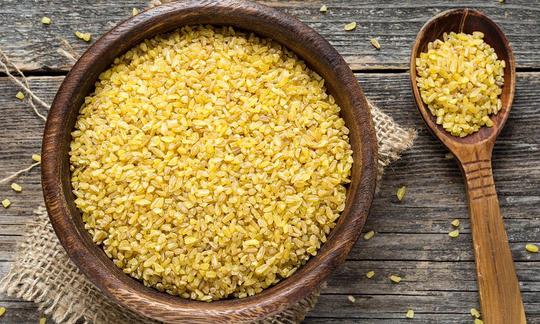

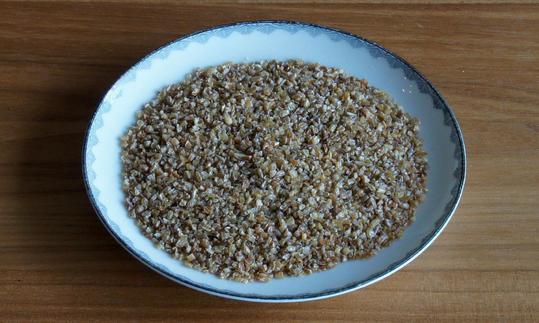

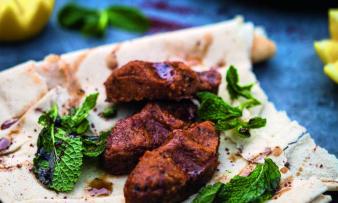
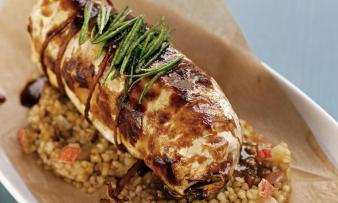
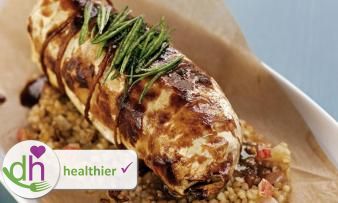


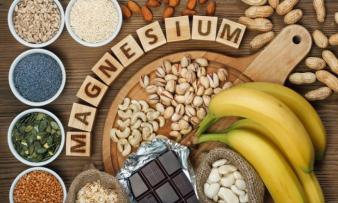


Comments